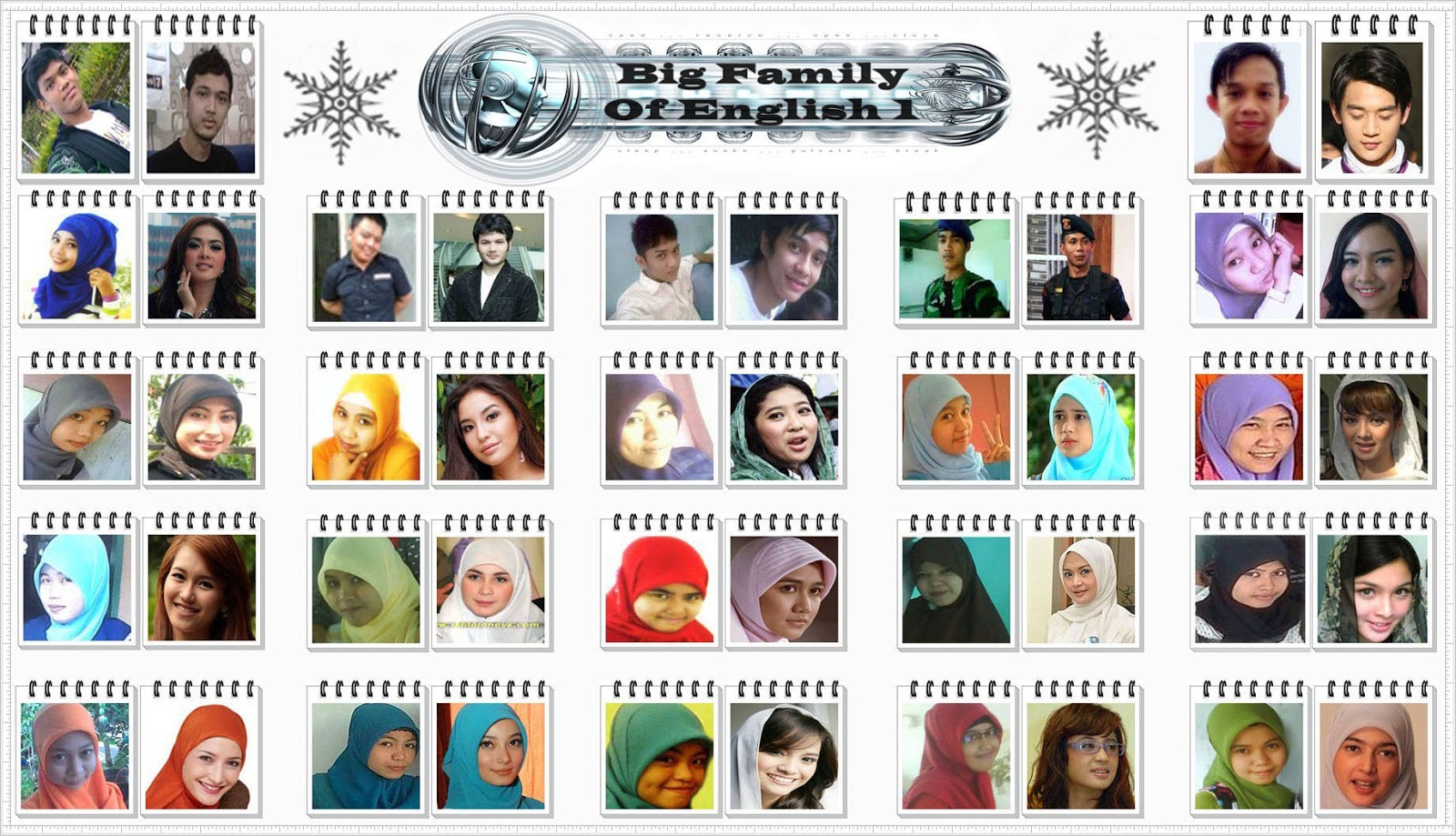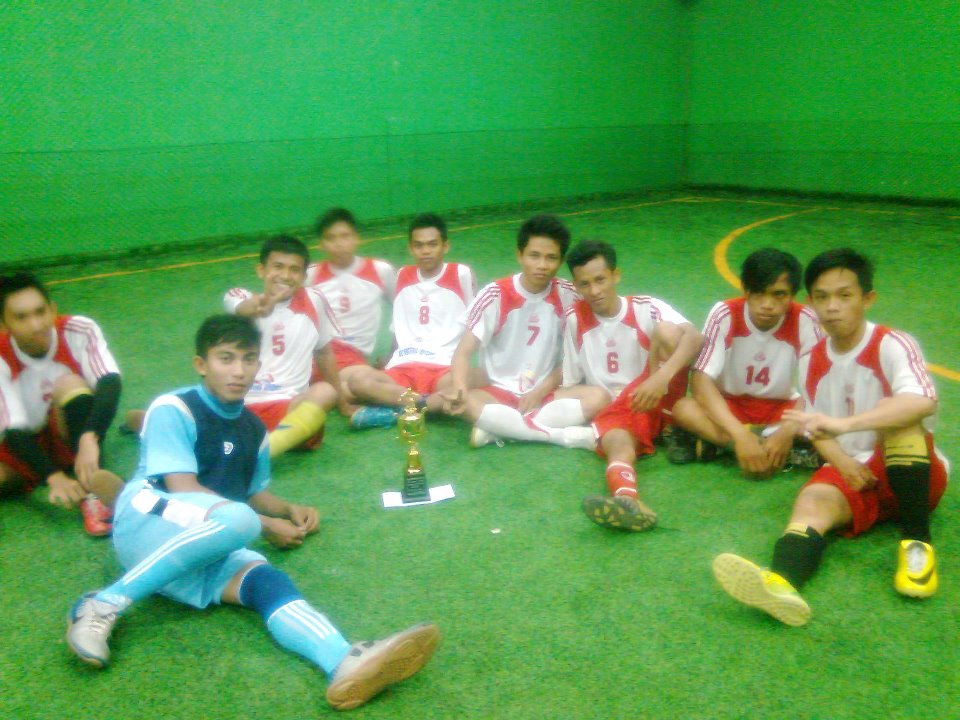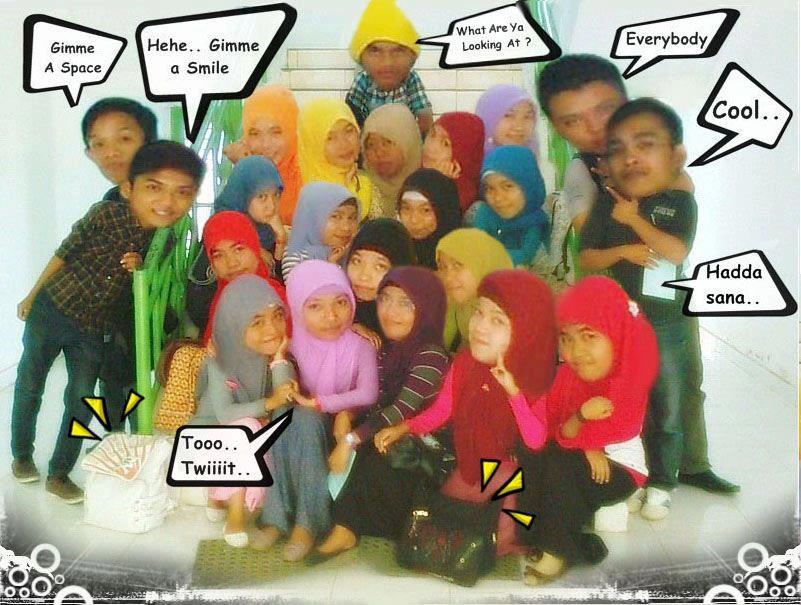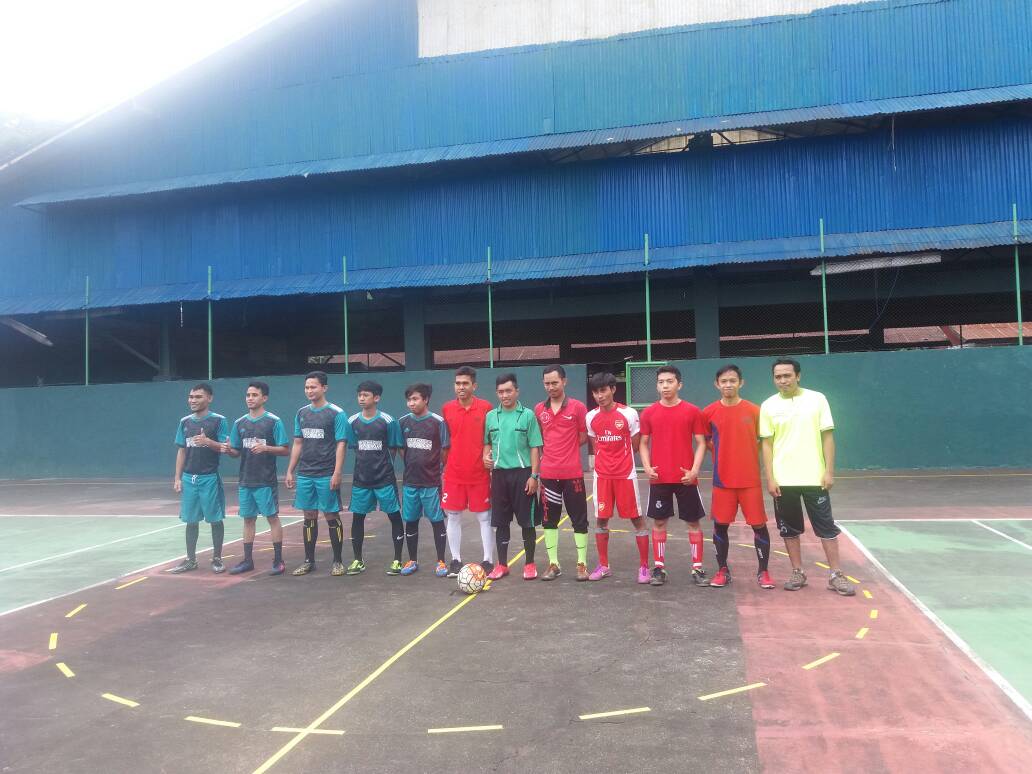ikrark@yahoo.com
safarnur@yahoo.com
English Educational Department
Graduate Program of State University of Makassar, Indonesia
safarnur@yahoo.com
English Educational Department
Graduate Program of State University of Makassar, Indonesia
ABSTRACT
Authentic materials are especially important for English for Specific Purpose (ESP) classroom, since they reproduce an immersion environment and provide a realistic context for tasks that relate to learner’s needs. This paper therefore emphasized on effective teaching model with authentic materials to be applied in ESP Classroom paticularly in Military Classroom. At the beginning, a review of ESP categories and roles of ESP teaching Materials are also offered in this paper. To end with, the interactive model of language learning by using authentic material in military classrooms is also addressed.
Keywords: Authentic materials, ESP, military classroom
INTRODUCTION
Authenticity has been pointed to by various authors as a relevant feature in ESP methodology (Safont & Esteve, 2004) and thus, authentic materials constitute an aspect traditionally emphasized in the ESP literature. The learner-centred approach is essential to ESP teaching, and identified learner’s needs are not fully satisfied by published texts. These authentic materials should be taken from the real world and not primarily created for pedagogical reasons. Such materials are particularly important for communicative purposes since they reproduce an immersion environment and provide a realistic context for tasks that relate to learner’s needs. Authentic materials can provide problem-solving, project-based learning, case based learning, role-play, and simulation and gaming methodology. Students and teachers can use authentic materials as a means to “link the formal, and to some extent artificial, environment of the classroom with the real world in which we hope our students will eventually be using the language they are learning”(Martínez, 2008). This also encourages top-down processing. It is important to bear in mind that the concept of context must be made central to in-class teaching, and therefore, authentic materials may lose much of their suitability when used in a very different context from that for which such material was originally intended. Indeed, authentic materials do not automatically lead to authentic responses, and this must always be remembered. Unfortunately, this conclusion was not self-evident in the early days of ESP, with what has been called “it is the headlong rush to use authentic materials willy-nilly”(Mishan, 2005). In fact Triki (2002) suggests that the need for ESP to access authentic materials is a strong argument for the application of Pragmatics to ESP.
Authentic materials are often found in ESP course books today and are particularly prevalent in commercial English. They can increase students’ motivation and expose them to real language as well as to the different genres of the professional community to which they aspire. Unlike simulated authentic materials, they must be constantly brought up-to-date. However, using authentic materials can be risky if the methodology is not carefully chosen because it is not always easy to use journals, magazines, documents from companies and other real sources, on a daily basis, especially with beginners. This may be due, amongst other things, to the difficulties presented by the language. In fact, such material will often have to be edited (and sometimes even discarded), in order for there to be a suitable match between learner and material learned.
Fortunately, ESP learners are not typically beginners in the foreign language, and authentic materials usually provide a good setting for introducing roughly-tuned input in a comprehensible way. In this fashion, teachers need consider appropriate approach when developing instructional program. Particularly in Military English teaching, English teachers should try to establish a model which is best to use in developing receptive and productive skills of students.
Furthermore, the aim of this paper is to explain the the use of authentic material in ESP classrooms particularly in Military Clasroom by suggesting an interactive model. In order to realize the aim, some key points are raised in this paper incuded; classification of ESP, roles of ESP teaching materials, authentic materials; and authentic materials for military purposes.
DISCUSSION
Classification of ESP
ESP has emerged to satisfy learners’ needs. According to Kennedy and Bolitho (1984), some of those needs are important for their studies, whereas others are crucial for their work and profession. The former is called English for academic purposes (EAP) and the later is referred to as English for occupational purposes (EOP). EAP and EOP are the main common parts that can be subsumed under the field of ESP. Each of which has its own characteristics. EAP refers to English as a course for academic purposes. This course is to develop English language skill of the learner for the study purposes. The term EOP, on the other hand, refers to English for occupation or professional purposes.
Roles of ESP Teaching Materials
Teaching an ESP classroom means to have certain qualities in order to help students in satisfying their needs. ESP students need to know the basic foundations of their specialism. They need to learn the common vocabulary and master different grammar rules in order to achieve the ultimate aims of teaching and learning process. ESP materials are useful when doing so since they provide helpfulness through appropriate selection of materials that teach vocabulary content and grammar rules.
Teaching Vocabulary content
Vocabulary is the backbone of ESP classroom teaching. Thornbury (1997)states that vocabulary and lexis in English are frequently used interchangeably. However, words are the building blocks in a language. One cannot develop his knowledge of a specific specialty unless he gets a rich background of its lexical items. English learners may face big problems when learning vocabulary and even when moving from one level to a higher one. Macaro (2005) spots the light on vocabulary when learning a foreign language, especially if it deals with different disciplines where sub-technical vocabulary exists and which are considered as the most crucial type of vocabulary to be learned in order to enhance the teaching and learning process within an ESP classroom.
When selecting ESP materials, a great consideration must be given to vocabulary content since it presents the main concern of students’ needs. In ESP, “specialized texts of any sort, whatever written or spoken, exhibit various characteristic lexical features.”(Kennedy & Bolitho, 1984, p. 56). Technical abbreviations, symbols and formulae, highly technical vocabulary, and subtechnical vocabulary are the lexical features of ESP texts. Teaching vocabulary to ESP students starts from word formation (prefixes and suffixes and identification of word classes) then moves to word relationships (synonymy, contextual clues, selection from alternatives, building up sets, and collocations. ESP materials are of different forms and contain different vocabulary content; the selection depends on the needs of the course, intended language and the degree of authenticity, and the students’ level and specialty.
Words do not exist as isolated items in language. They are integrated in a complex system in which different levels of a lexical item is produced in order to supply a suitable understanding in receptive skills and provide an adequate production of ideas in productive ones.
Teaching Grammar Rules
It has been remarked that vocabulary takes a great part within ESP classrooms. But knowing vocabulary without mastering grammar rules does not help students in their studies since grammar has its importance as well. Though discourse can be understandable with wrong grammar rules’ use, but it would not be coherent and appropriate, and the meaning of the discourse would not be accurate. Ur (1991, p. 75) defines grammar as “… a set of rules that define how words (or parts of words) are combined or changed to form acceptable units of meaning within a language”.
Grammar can be taught through two different approaches as (Harmer, 2002, p. 49) states “There are basically two ways in which a learner can achieve understanding of a rule, the deductive (rule-driven) path and the inductive (rule-discovery) path”. Deductive approach is based on teaching grammar from rules; students are asked to retain the definitions, the rules, the examples, and the exceptions. It is very helpful for students to gain more time in practicing excercises. Inductive approach is based on teaching grammar from examples and students are asked to discover the organizational principles and formulate a set of rules. Inductive learning can be an effective means of teaching grammar. Learning inductively means studying examples of language in use, and exploring underlying patterns and rules. This approach is very helpful in making learners more active through giving more chance to interaction and discussion when giving them the opportunity to extract rules from the examples.
Macaro (2005) proposes two ways that teachers may use when wanting to provide helpfulness to their learners in order to get better memorization and understanding of grammar rules. First, practice might be a good solution. It is controlled, contextualized or communicative. It contains series of stages based on activities that are helpful to transfer the information from short to long memory. Second, consciousness-raising is the other solution. It is an attempt to motivate learners in grammar rules understanding so that their knowledge can be discovered.
The ESP materials that are used to teach grammar rules should respect two principles: efficiency-factor and appropriacy-factor. On the one hand, to be efficient is very crucial. According to Harmer (2002, p. 25) “when considering an activity for the presentation or practice of grammar the first question to ask is: how efficient is it?”. Efficiency might be measured according to three elements: economy, ease, and efficacy. On the other hand, appropriacy is the second crucial principle of grammar teaching. Learners are different concerning their interests, level, needs, and goals, beliefs, values, attitudes, age, materials and resource, experience and expectations, cultural factors, group size, educational context, and the constitution of the group. These variations must be taken into account when wanting to be appropriate. These factors are interrelated and cannot be taken separately.
Authentic Materials
Authentic materials can provide experiences in the real life, present authentic information about culture, that meet the learners’ need. Besides, authentic materials can increase students’ motivation and support teachers in implementing effective teaching method (Richards & Rodgers, 2001). Herrington and Oliver (2000) suggested a new pedagogical term, called "authentic learning". This term is directly related to the students' real life and prepares them to face and deal with real world situations. In other words it emphasized on learning 'materials and activities' which imitated from real world situation. In addition to make clear distinction about authentic materials, Nunan (1989) defines authentic materials as the materials "which have been produced for purposes other than to teach language".
Today, with the help of technological developments, we have access to many sources easily and quickly. Almost all the printed materials are on the Internet in electronic forms and we can easily search anything anytime. As a result, we do not lack cultural content to use in our classrooms.
Teaching materials are a very essential part of teaching and learning a foreign language. These days, the resources for teaching materials are available for everybody. The internet is regarded as a very important and rich source for authentic materials.
There are also lists sources of cultural information such as:
1. Newspapers: these are a good source of cultural information: local papers will give more of a flavour of everyday life in towns.
Video: a number of published ELT video tapes are a good visual source of cultural information. (Today, we have CD/DVD versions of these video tapes, which provide us with better quality.)
Talks/discussions: some topics may be suitable for giving information to students in a plenary session.
Role play/dramatizations: these can be used to initiate discussion and introspection.
Culture quizzes/tests.
Preparing authentic materials for use in the classroom can be very time- consuming. Osborne (2005) suggests that it is essential to have a clear purpose in mind as well as a personal approach that permits the adaptation of most authentic materials. Likewise, the ESP instructor must always incorporate authentic texts that are locally meaningful. The definition of authentic materials in an ESP course is closely related to that authenticity “refers not only to the form, contents and the communicative goal of a text, but also and most importantly, to the purpose of reading.”. Cañado and Esteban (2015) first suggest evaluating the authenticity of ESP materials; then they elaborate a very complete checklist as part of their authenticity evaluation proposal for the area of Business English. The checklist includes headings such as: context and target situation; the student; the teacher; and contents, which include linguistic aspects, sociocultural aspects, notional-functional aspects, topics, organization and activities.
Authentic Materials for Military Purposes
In this framework, the authors suggest some a model which can be used to manipulate English learning into more alive with emphasizing on real life experience by manipulating the use of authentic materials in ESP classroom particularly in Military Classroom.
The Interactive Model
Under this model, the entire teaching process is based and characterized by interaction between teachers and students. If we are to consider the cultivation of communicative skills the primary goal of foreign language learning, then interaction is a must in the classroom. Real communication is defined as interaction between people; in the same way, linguistic interaction is seen as a collaborative activity and therefore classroom teaching and learning activities must be interactive in nature. Interactive language teaching stressess the importance of providing learners with opportunities to interact directly with the target language, to acquire it by using it rather than learning it by studying it. It shifts the focus from teacher centred to student centred activities; the teacher is no longer the sage on the stage but a facilitator, a manager, an independent participant, making the process of learning an easy task and helping students clear away roadblocks and finding their own way through different communicative situations. The learners are expected to cooperate by listening to each other, sharing information, negotiating meaning, solving problems, dealing with real life situations in the target language.
The interactive model is based on some fundamental teaching principles: the initiation of interaction (usually done by the teacher), achieved with the help of various questioning strategies (knowledge questions, comprehension questions, application questions, inference questions, analysis questions, synthesis questions, etc); the engaging of the students, meaning the application of active learning principles through discussions, debates, pair work and group work activities; the promotion of the appropriate language strategies, which requires that educators possess a solid theoretical background enabling them to promote learners’ awareness and their active involvement in the learning process (memory strategies, cognitive strategies, compensation strategies, metacognitive strategies, social strategies, affective strategies, etc.) (Rivers, 2000, p. 15)
Practice has demonstrated that the most workable interactive classroom activities are presentations, pair work, discussions, debates and written practice. Especially with ESP, these activities need to be task oriented, so that they can help nurture students’ problem-solving and creative abilities and give them experience in functioning in realistic contexts. The example we have chosen in support of this model is the usage of case studies, especially oriented to suit military students’ needs, since they are most of the time during their careers placed in situations where they have to analyze and solve a typical problem. Case studies have proven to be an extremely effective method of provoking controversy and debate on issues for which definite solutions do not exist.
A specific example would be the following activity taken from the collection of authentic military texts and exercises Mil-to-Mil (Dumitrescu & Dragomir, 2008).
1. Firstly, students are asked to read a text about famous war. This activity involves reading comprehension skills and the reactivation of the previously-taught vocabulary and grammar points. The follow-up activity for this reading is a situational task, in which the military students are instructed to use a map and draw the tactical movements of the armies involved in the conflict.
2. The learners are then put into groups of three or four and asked to discuss, analyze and evaluate the military strategies used. This activity is a very complex one, allowing a diverse usage of language, language functions and skills. The students are offered discussion cues, which focus them on using specific vocabulary and concepts from the lesson (e.g. discuss the leadership skills involved in the battle).
3. Grammar points are not neglected; based on the information in the text, the students are instructed to create a number of hypothetical situations related to the possible outcome of the battle (e.g. imagine alternative strategies, what if’s). The array of language functions to be practiced is also extremely diverse. When asked to assess and evaluate the military strategies presented in the text, students have to demonstrate a good command of language functions: summarizing, paraphrasing, hypothesizing, argumenting, defending policy, explaining, exemplifying, etc.
4. We should not overlook the opportunity such activities give us for practising critical thinking skills, with the big advantage of creating a genuine, real-life, contextualized situation which offers the learners the necessary level of comfort, even with the newest aspects of the language they do not master so well.
CONCLUSION
The use of authentic materials in the ESP classroom has been discussed, with the student benefiting from the exposure to real language being used in a real context. Authentic materials are highly motivating, giving a sense of achievement as well as usefullness when understood and encourage further reading. It also become a flexible material for interactive teaching model, particularly in Military context. They reflect the changes in the use of language, there is a wide variety of text types, and they are also very versatile since it holds an efficient balance between receptive skills and productive skills.
REFERENCES
Cañado, M. L. P., & Esteban, A. A. (2015). Authenticity in the teaching of ESP: An evaluation proposal. Scripta Manent, 1(1), 35-43.
Dumitrescu, A., & Dragomir, I. (2008). Mil-to-Mil: a Collection of Authentic Text-Based Exercises. Sibiu: Editura Academiei Forţelor Terestre "Nicolae Bălcescu".
Genhard, J. (1996). Teaching English as a foreign language: A teacher self-development and methodology. Ann arbor: the university of Michigan press.
Harmer, J. (2002). How to Teach English: An Introduction to the Practice of English Language Teaching. Malaysia: Addison Wesely Longman.
Herrington, J., & Oliver, R. (2000). An instructional design framework for authentic learning environments. Educational technology research and development, 48(3), 23-48.
Kennedy, C., & Bolitho, R. (1984). English for specific purposes: Macmillan Pub Ltd.
Macaro, E. (2005). Teaching and learning a second language: A guide to recent research and its applications: Bloomsbury Publishing.
Martínez, R. D. (2008). Didactic Approaches for Teachers of English in an International Context (Vol. 138): Ediciones Universidad de Salamanca.
Mishan, F. (2005). Designing authenticity into language learning materials: Intellect Books.
Nunan, D. (1989). Designing tasks for the communicative classroom: Cambridge University Press.
Osborne, P. (2005). Teaching English One-to-one: Modern English Publishing.
Price-Machado, D. (1991). English for Specific Purposes (ESP):Tailoring Courses to Students Needs and to the Outside World. In M. Celce-Murcia & L. McIntosh (Eds.), Teaching English as a second or foreign language (3 ed.). United States: Heinle & Heinle.
Richards, J. C., & Rodgers, T. S. (2001). Approaches and methods in language teaching: Cambridge university press.
Rivers, W. M. (2000). Interactive Language Teaching. Cambridge: Cambridge University Press.
Safont, M. P., & Esteve, M. J. (2004). Online resources for the EAP classroom: Ways of promoting EFL learners’ autonomy. Linguistic Studies in Academic and Professional English(17), 261.
Thornbury, S. (1997). About Language. Cambridge: Cambridge University Press.
Triki, M. (2002). Pragmatics for ESP purposes. GEMA Online® Journal of Language Studies, 2.
Ur, P. (1991). A Course in Language Teaching: Practice And Theory. New York: Cambridge University Press.





